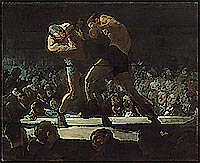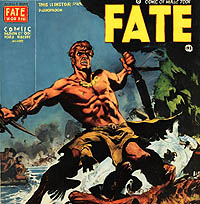Before I relate the attack of Oswego, I shall review a little what the French were doing during these our dilatory, pompous proceedings.
The Marquis de Vaudreuil, Governor and Lieutenant General of New France, whilst he provided for the security of the frontiers of Canada, was principally attentive to the lakes. Being informed that we were making vast preparations at Oswego for attacking Niagara and Frontenac, he took and razed, in the month of March, the fort where we had formed our principal magazine; and in June following, destroyed on the river Chonenan or Oswego, some of our vessels, and made some prisoners. The success of these two expeditions encouraged him to act offensively, and to attack us at Oswego. This settlement they pretended, and still insist on, to be an encroachment, or invasion, which we had made in time of profound peace, and against which, they said, they had continually remonstrated, during our blundering negotiating Lawyer's residence at France. It was at first, say they, only a fortified magazine; but, in order to avail themselves or its advantageous situation in the centre almost of the French colonies, the English added, from time to time, several new works, and made it consist of three forts, as above described.
The troops designed for this expedition by the French amounted to near 5000 men, 1300 of which were regulars. To prevent his design being discovered, de Vaudreuil pretended, in order the better to deceive us, who had so long before been blind, that he was providing only for the security of Niagara and Frontenac. The Marquis de Montcalm, who commanded on this occasion, arrived the 29th of July at Fort Frontenac: and having given the necessary directions for securing his retreat, in case it should have been rendered inevitable, by a superior force, sent out two vessels, one of 12 and the other of l6 guns, to cruize off Oswego, and posted a chain of Canadians and Indians on the road between Oswego and Albany, to intercept our couriers. All the forces, and the vessels, with the artillery and stores, being arrived in the bay of Nixoure, the place of general rendezvous, the Marquis de Montcalm ordered his advanced guard to proceed to a creek called Anse aux Cabannes, three leagues from Oswego. But, to carry on this account the more accurately and intelligibly to the reader, I shall recite the actions of the French and ourselves together, as a more clear and succinct manner of making those unacquainted with the art of war, more sensible of this important affair.
Colonel Mercer, who was then commanding officer of the garrison at Oswego, having, on the 6th of August, intelligence of a large encampment of French and Indians, about 12 miles off, dispatched one of the schooners, with an account of it, to Captain Bradley, who was then on a cruize with the large brigantine and two sloops; at the same time desired him to cruize as far to the eastward as he could, and to endeavour to prevent the approach of the French on the lake: but meeting the next day with a small gale of wind, the large brigantine was drove on shore near Oswego, in attempting to get into the harbour—of which misfortune the Indians immediately gave M. de Montcalm, the French General, notice, who took that opportunity of transporting his heavy cannon to about a mile and a half of the fort, which he could not otherwise have done, had not there been some neglect on our side.
For on the 10th, the first division of the French being arrived at Anse aux Cabannes, at two o'clock in the morning, the van-guard proceeded, at four in the afternoon, by land, across woods, to another creek within half a league of Oswego, in order to favour the debarkation. At midnight their first division repaired to this creek, and there erected a battery on the lake Ontario.
Colonel Mercer, in the morning of the 10th, on some canoes being seen to the eastward, sent out the small schooner to make discovery of what they were; she was scarce half a mile from the fort, before she discovered a very large encampment, close under the opposite point, being the first division of the French troops above-mentioned. On this, the two sloops (the large brigantine being still on shore) were sent out with orders, if possible, to annoy the enemy—but this was to no purpose: the enemy's cannon being large and well pointed, hulled the vessels almost every shot, while theirs fell short of the shore.
Note
A league was an old Celtic measure that was the distance a person could walk in an hour, ranging from 2.4 to 4.6 miles.
If heavier cannon could be positioned on land than what was mounted on board opposing naval forces, shore bombardments and port raids became suicide missions. To be hulled was to have holes blown low enough on the ship as to pose a threat of taking on water and sinking,











